Today Current Affairs: 25th April 2022 for UPSC IAS exams, State PSC exams, SSC CGL, State SSC, RRB, Railways, Banking Exam & IBPS, etc
Table of Contents
Coal Shortage:
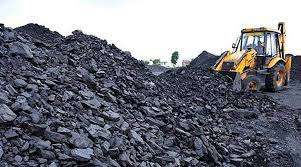
The India Energy Outlook 2021 report of the International Energy Agency (IEA) said energy use in India has doubled since 2000, with 80% of demand still being met by coal, oil and solid biomass.
- Pandemic-related disruptions, however, prevented the stock-up of coal. Mining operations were halted to curb the spread of the virus. Despite the gradual easing into operations, mining activities were hampered during the monsoons, delaying arrival of stocks.
- With household demand for power picking up and the arrival of summer, combined with the sudden acceleration in economic activity, it has resulted in a demand-supply mismatch.
- Decline in coal stocks and the resulting power outages in several States have spurred queries of renewable energy’s potential to fill in for the conventional resource.
- Coal is abundantly available, has shorter gestation periods and coal-based plants have lower capital costs than hydel and nuclear plants, therefore, making it the most viable enabler of energy security in the country.
- The conventional resource’s capacity addition is further helped by the increased participation of the private sector in power generation.
Phone Tapping In India:

IPS officer Rashmi Shukla is facing an FIR in Mumbai and is being probed for allegedly tapping the phones of Rajya Sabha MP Raut and NCP leader Eknath Khadse in 2019, when she was heading the State Intelligence Department in Maharashtra.
- Section 5(2) says that “on the occurrence of any public emergency, or in the interest of the public safety”, phone tapping can be done by the Centre or states if they are satisfied it is necessary in the interest of “public safety”, “sovereignty and integrity of India, the security of the State.
- There is an exception for the press: “press messages intended to be published in India of correspondents accredited to the Central Government or a State Government shall not be intercepted or detained, unless their transmission has been prohibited under this sub-section”.
- In the states, police have the powers to tap phones.
- At the Centre, 10 agencies are authorised to do so: Intelligence Bureau, CBI, Enforcement Directorate, Narcotics Control Bureau, Central Board of Direct Taxes, Directorate of Revenue Intelligence, National Investigation Agency, R&AW, Directorate of Signal Intelligence, and the Delhi Police Commissioner.
- Tapping by any other agency would be considered illegal
- Rule 419A of the Indian Telegraph (Amendment) Rules, 2007, says phone tapping orders “shall not be issued except by an order made by the Secretary to the Government of India in the Ministry of Home Affairs in the case of Government of India and by the Secretary to the State Government in-charge of the Home Department in the case of a State Government”.
- The order has to conveyed to the service provider in writing; only then can the tapping begin.
China-Pakistan Economic Corridor (CPEC):
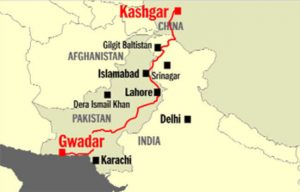
Pakistan’s new government has initiated a process to abolish the China-Pakistan Economic Corridor Authority, with the planning minister saying it was a “redundant organisation” that wasted resources and thwarted speedy implementation of the ambitious regional connectivity programme.
- CPEC Authority established through an ordinance in 2019 was aimed at accelerating the pace of CPEC-related activities, finding new drivers of growth, unlocking the potential of interlinked production networks and global value chains through regional and global connectivity.
- CPEC launched in 2015, the CPEC is the flagship project of the multi-billion-dollar Belt and Road Initiative (BRI), a pet project of Chinese President Xi Jinping, aimed at enhancing Beijing’s influence around the world through China-funded infrastructure projects.
- The 3,000 km-long China–Pakistan Economic Corridor (CPEC) consists of highways, railways, and pipelines.
- CPEC eventually aims at linking the city of Gwadar in South Western Pakistan to China’s North Western region Xinjiang through a vast network of highways and railways.
- The proposed project will be financed by heavily-subsidised loans, that will be disbursed to the Government of Pakistan by Chinese banks.
Draft Protection And Enforcement Of Interests In Aircraft Objects Bill, 2022:

The Ministry of Civil Aviation has sought stakeholders’ comments on the draft Protection and Enforcement of Interests in Aircraft Objects Bill, 2022.
Highlights of the Bill:
- The Bill implements the provisions of the Convention on International Interests in Mobile Equipment and Protocol on Matters Specific to Aircraft Equipment which was adopted at a conference in Cape Town in 2001.
- India acceded to the two instruments in 2008.
- These provide default remedies for the creditor and create a legal regime for disputes.
- Once passed, the law will help international aircraft leasing companies to repossess and transfer planes out of India incase of a financial dispute with an Indian airline at a time many regional airlines have been refused planes on rent.
- The proposed law provides remedies such as repossession of an aircraft object, or its sale or lease or collection of income from its use as well as de-registration and export of planes.
- It also suggests remedies pending final adjudication of a claim as well as safeguards a debtor’s claim during insolvency proceedings against its Indian buyer.
Meteor Showers In Indian Skies:
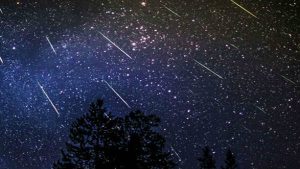
Lyric Meteor showers peaked in Indian skies on April 22nd and will continuously pass through till April 29 at nearly 10-15 meteors every hour.
- Lyrids are debris of Comet Thatcher, which is currently traveling at a distance of 1,60,00,00,000 kilometers from the planet.
- Currently traveling away from the Sun, Comet Thatcher will begin its return trajectory in another 45 years.
- Every 33 years, a Leonid shower turns into a meteor storm, which is when hundreds to thousands of meteors can be seen every hour.
- A meteor storm should have at least 1,000 meteors per hour. In 1966, a Leonid storm offered views of thousands of meteors that fell through the Earth’s atmosphere per minute during a period of 15 minutes.
- The last such storm took place in2002.
- Meteors are bits of rock and ice that are ejected from comets as they manoeuvre around their orbits around the sun.
- Meteor showers are witnessed when Earth passes through the trail of debris left behind by a comet or an asteroid.
Incredible India International Cruise Conference 2022:

Sarbananda Sonowal, the Union Minister of Ports, Shipping and Waterways, and AYUSH during an event announced that Mumbai will be hosting the 1st Incredible India International Cruise Conference-2022 from 14th to 15th May 2022
- Sagarmala initiative was also talked about and how this initiative is connecting the ports of Vizag, Chennai, and Andaman with Goa, which receives the maximum number of tourists was discussed.
- Dr Sanjeev Ranjan, Secretary of Ministry of Ports, Shipping and Waterways, Rajiv Jalota, Chairman of Mumbai Port Authority and Sanjay Bandopadhyay, Chairman of Inland Waterways Authority of India also spoke during this event.
- This event will be organized by the Ministry of Ports, Shipping and Waterways, the Federation of Indian Chambers of Commerce and Industry (FICCI), and the Mumbai Port Authority.
- The Indian cruise market has the potential of growing by ten times over the next decade due to disposable incomes and rising demand.
- The mascot of the conference: The logo, brochure, and the mascot of the conference were unveiled by Sarbananda Sonowal. The mascot of this conference has been named Captain Cruzo.
First Navigation Chart : India- Maldives
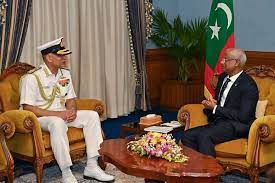
During a three–day visit to the Maldives, Chief of Naval Staff (CNS), Adm R. Hari Kumar unveiled the first navigation chart that has been jointly produced by India and Maldives.
- He also handed over hydrography equipment to strengthen the Maldivian National Defence Forces’ (MNDF) capabilities.
- He also visited the maritime assets of the MNDF maritime and praised the joint efforts of the Indian Navy and the MNDF for maintaining these assets’ role worthiness.
- A consignment of engineering equipment was also presented by the CNS for further sustenance of the MNDF ships.
- India is committed to enhancing the MNDF’s capacity-building efforts.
- For the purpose of undertaking the joint hydrographic survey under the hydrographic cooperation MoU, the INS Sutlej has been deployed to the Maldives.
- A reception was hosted onboard the INS Sutlej by Adm. Kumar on 18th April 2022 in honour of Mariya Ahmed Didi, the Defence Minister of the Maldives and the MNDF leadership.
Western Disturbances:
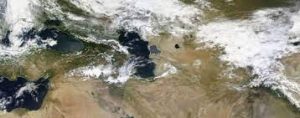
Variations in the intensity and locations of the Western Disturbances have brought heavy rainfall to Delhi during some months and kept the city dry and in the grip of a heat wave at other times.
- Western disturbances are storms that originate in the Caspian or Mediterranean Sea, and bring non-monsoonal rainfall to northwest India, according to the India Meteorological Department (IMD).
- They are labelled as an extra-tropical storm originating in the Mediterranean, is an area of low pressure that brings sudden showers, snow and fog in northwest India.
- The disturbance travels from the “western” to the eastern direction.
- These travel eastwards on high-altitude westerly jet streams – massive ribbons of fast winds traversing the earth from west to east.
- Disturbance means an area of “disturbed” or reduced air pressure.
- Equilibrium exists in nature due to which the air in a region tries to normalise its pressure.
- In the term “extra-tropical storm”, storm refers to low pressure. “Extra-tropical” means outside the tropics. As the WD originates outside the tropical region, the word “extra-tropical” has been associated with them.
- A WD is associated with rainfall, snowfall and fog in northern India. It arrives with rain and snow in Pakistan and northern India.
- The moisture which WDs carry with them comes from the Mediterranean Sea and/or from the Atlantic Ocean.
- WD brings winter and pre-monsoon rain and is important for the development of the Rabi crop in the Northern subcontinent.
- The WDs are not always the harbingers of good weather. Sometimes WDs can cause extreme weather events like floods, flash floods, landslides, dust storms, hail storms and cold waves killing people, destroying infrastructure and impacting livelihoods.
- In 2021, Delhi witnessed the rainiest October in 65 years, with the Safdarjung weather observatory recording 122.5 mm of rainfall against a normal of 28 mm, on account of western disturbances.
- Excess rainfall was also recorded in January and February this year. In contrast, there was no rainfall in November 2021 and March 2022, and the summer saw an unusually early start with heat waves setting in at the end of March 2022.
- Multiple western disturbances that brought cloud cover had also kept the maximum temperature low in February 2022, when the lowest maximum temperature in 19 years was recorded.
- Active western disturbances eluded northwest India in March 2022, and absence of cloud cover and rain allowed temperatures to remain high.
What Are Genetically Modified Mosquitoes?
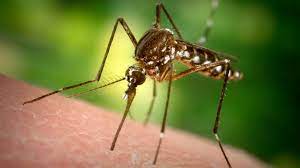
The US conducted an open-air study of genetically engineered mosquitoes which shows promising results.
- The aim of the study is to reduce the population of wild Aedes aegypti mosquitoes that are a vector for viruses such as chikungunya, dengue, zika and yellow fever.
- The mosquitoes had already been field-tested in Brazil, Panama, the Cayman Islands, and Malaysia, but no such study was conducted in the United States.
- GM mosquitoes are mass-produced in a laboratory to carry two types of genes:
- A self-limiting gene that prevents female mosquito offspring from surviving to adulthood.
- A fluorescent marker gene that glows under a special red light. This allows researchers to identify GM mosquitoes in the wild.
- GM mosquitoes produced in the laboratory lay eggs. These eggs carry the self-limiting and fluorescent marker genes.
- GM mosquito eggs that carry the self-limiting gene are released into an area. Once they have hatched and develop through to the adult stage, they are available to mate with wild females. The genes are passed on to offspring.
- The male mosquitoes have a protein (the tTAV-OX5034 protein) that prevents female offspring from surviving when male OX5034 mosquitoes mate with wild female mosquitoes.
- The female offspring die before they become adults. The expected result is that the number of Aedes aegypti mosquitoes in the area decreases.
Government Order GO 111:
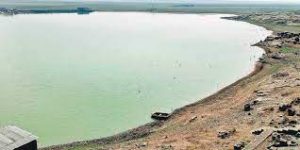
Environmentalists and activists are criticizing the Telangana government for withdrawing an over 25-year-old government order (GO) 111 protecting the historic Osman Sagar and Himayat Sagar reservoirs in Hyderabad, which they say will destroy the fragile surrounding ecosystem.
- On 8th March, 1996, the government of erstwhile (undivided) Andhra Pradesh had issued GO 111 prohibiting development or construction works in the catchment area of the Osman Sagar and Himayat Sagar lakes up to a radius of 10 km.
- The GO prohibited the setting up of industries, residential colonies, hotels, etc. which cause pollution.
- The aim of the restrictions was to protect the catchment area, and to keep the reservoirs pollution-free.
- The lakes had been supplying water to Hyderabad for nearly 70 years and were the main source of drinking water for the city at the time.
- The reservoirs were created by building dams on the Musi (also known as Moosa or Muchkunda) river, a major tributary of the Krishna, to protect Hyderabad from floods.
- The proposal to build the dams came after a major flood during the reign of the sixth nizam Mahbub Ali Khan (1869-1911) in 1908, in which more than 15,000 people were killed.
- The lakes came into being during the reign of the last nizam, Osman Ali Khan (1911-48). Osman Sagar was completed in 1921, and Himayat Sagar in 1927. The nizam’s guesthouse at Osman Sagar is now a heritage building.
- The city no longer depends on these two reservoirs for water supply, and there was no need to continue with the restrictions on development in the catchment radius.
- Hyderabad’s drinking water requirement has increased to more than 600 Million Gallons per Day (MGD), which is being drawn from other sources including the Krishna river.




